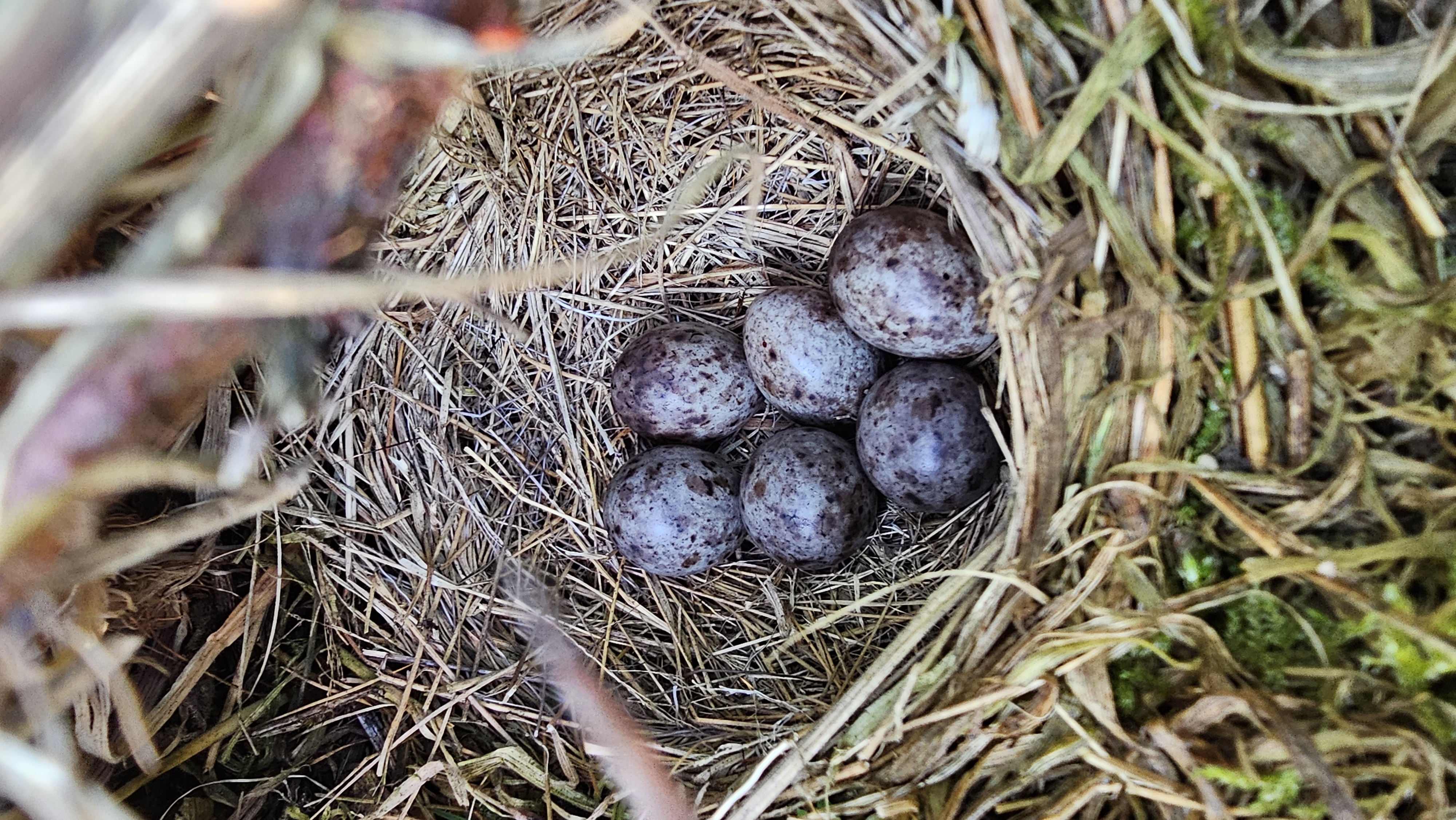|
Olive-backed Pipit
The olive-backed pipit (''Anthus hodgsoni'') is a small passerine bird of the pipit (''Anthus'') genus, which breeds across southern, north central and eastern Asia, as well as in the north-eastern European Russia. It is a long-distance bird migration, migrant moving in winter to southern Asia and Indonesia. Sometimes it is also called Indian pipit or Hodgson's pipit, as well as tree pipit owing to its resemblance with the tree pipit. However, its back is more olive-toned and less streaked than that species, and its head pattern is different with a better-marked supercilium. The genus name ''Anthus'' is from Latin and is the name for a small bird of grasslands. The specific ''hodgsoni'' commemorates English diplomat and collector Brian Houghton Hodgson. Distribution * Summer: from Himalayan Pakistan and India, westward through Nepal, into China, north to Gansu province, and eastwards through Korea to Japan, and north through north central Asia into north-eastern Europe (European ... [...More Info...] [...Related Items...] OR: [Wikipedia] [Google] [Baidu] |
Nepal
Nepal, officially the Federal Democratic Republic of Nepal, is a landlocked country in South Asia. It is mainly situated in the Himalayas, but also includes parts of the Indo-Gangetic Plain. It borders the Tibet Autonomous Region of China China–Nepal border, to the north, and India India–Nepal border, to the south, east, and west, while it is narrowly separated from Bangladesh by the Siliguri Corridor, and from Bhutan by the States and union territories of India, Indian state of Sikkim. Nepal has a Geography of Nepal, diverse geography, including Terai, fertile plains, subalpine forested hills, and eight of the world's ten List of highest mountains#List, tallest mountains, including Mount Everest, the highest point on Earth. Kathmandu is the nation's capital and List of cities in Nepal, its largest city. Nepal is a multi-ethnic, multi-lingual, multi-religious, and multi-cultural state, with Nepali language, Nepali as the official language. The name "Nepal" is first record ... [...More Info...] [...Related Items...] OR: [Wikipedia] [Google] [Baidu] |
Himalaya
The Himalayas, or Himalaya ( ), is a mountain range in Asia, separating the plains of the Indian subcontinent from the Tibetan Plateau. The range has some of the Earth's highest peaks, including the highest, Mount Everest. More than 100 peaks exceeding elevations of above sea level lie in the Himalayas. The Himalayas abut on or cross territories of six countries: Nepal, China, Pakistan, Bhutan, India and Afghanistan. The sovereignty of the range in the Kashmir region is disputed among India, Pakistan, and China. The Himalayan range is bordered on the northwest by the Karakoram and Hindu Kush ranges, on the north by the Tibetan Plateau, and on the south by the Indo-Gangetic Plain. Some of the world's major rivers, the Indus, the Ganges, and the Tsangpo– Brahmaputra, rise in the vicinity of the Himalayas, and their combined drainage basin is home to some 600 million people; 53 million people live in the Himalayas. The Himalayas have profoundly shaped the cultures of ... [...More Info...] [...Related Items...] OR: [Wikipedia] [Google] [Baidu] |
Wintering Birds Of Indomalaya
Winter is the coldest and darkest season of the year in temperate and polar climates. It occurs after autumn and before spring. The tilt of Earth's axis causes seasons; winter occurs when a hemisphere is oriented away from the Sun. Different cultures define different dates as the start of winter, and some use a definition based on weather. When it is winter in the Northern Hemisphere, it is summer in the Southern Hemisphere, and vice versa. Winter typically brings precipitation that, depending on a region's climate, is mainly rain or snow. The moment of winter solstice is when the Sun's elevation with respect to the North or South Pole is at its most negative value; that is, the Sun is at its farthest below the horizon as measured from the pole. The day on which this occurs has the shortest day and the longest night, with day length increasing and night length decreasing as the season progresses after the solstice. The earliest sunset and latest sunrise dates outside t ... [...More Info...] [...Related Items...] OR: [Wikipedia] [Google] [Baidu] |
Birds Of Asia
Birds are a group of warm-blooded vertebrates constituting the class Aves (), characterised by feathers, toothless beaked jaws, the laying of hard-shelled eggs, a high metabolic rate, a four-chambered heart, and a strong yet lightweight skeleton. Birds live worldwide and range in size from the bee hummingbird to the common ostrich. There are over 11,000 living species and they are split into 44 orders. More than half are passerine or "perching" birds. Birds have wings whose development varies according to species; the only known groups without wings are the extinct moa and elephant birds. Wings, which are modified forelimbs, gave birds the ability to fly, although further evolution has led to the loss of flight in some birds, including ratites, penguins, and diverse endemic island species. The digestive and respiratory systems of birds are also uniquely adapted for flight. Some bird species of aquatic environments, particularly seabirds and some waterbirds, have furt ... [...More Info...] [...Related Items...] OR: [Wikipedia] [Google] [Baidu] |
Anthus
The pipits are a Cosmopolitan distribution, cosmopolitan genus, ''Anthus'', of small passerine birds with medium to long tails. Along with the wagtails and longclaws, the pipits make up the family (biology), family Motacillidae. The genus is widespread, occurring across most of the world, except the driest deserts, rainforest and the mainland of Antarctica. They are slender, often drab, ground-feeding insectivores of open country. Like their relatives in the family, the pipits are monogamy in animals, monogamous and territory (animal), territorial. Pipits are ground nesters, laying up to six speckled eggs. Taxonomy and systematics The genus ''Anthus'' was introduced in 1805 by German naturalist Johann Matthäus Bechstein. The type species was later designated as the meadow pipit. The genus, generic name ''Anthus'' is the Latin word for a small bird of grasslands mentioned by Pliny the Elder. Molecular studies of the pipits suggested that the genus arose in East Asia around sev ... [...More Info...] [...Related Items...] OR: [Wikipedia] [Google] [Baidu] |
Olive Backed Pipit I IMG 3859
The olive, botanical name ''Olea europaea'' ("European olive"), is a species of subtropical evergreen tree in the family Oleaceae. Originating in Asia Minor, it is abundant throughout the Mediterranean Basin, with wild subspecies in Africa and western Asia; modern cultivars are traced primarily to the Near East, Aegean Sea, and Strait of Gibraltar. The olive is the type species for its genus, ''Olea'', and lends its name to the Oleaceae plant family, which includes species such as lilac, jasmine, forsythia, and ash. The olive fruit is classed botanically as a drupe, similar to the cherry or peach. The term oil—now used to describe any viscous water-insoluble liquid—was virtually synonymous with olive oil, the liquid fat made from olives. The olive has deep historical, economic, and cultural significance in the Mediterranean; Georges Duhamel remarked that the "Mediterranean ends where the olive tree no longer grows". Among the oldest fruit trees domesticated by human ... [...More Info...] [...Related Items...] OR: [Wikipedia] [Google] [Baidu] |
Gansu
Gansu is a provinces of China, province in Northwestern China. Its capital and largest city is Lanzhou, in the southeastern part of the province. The seventh-largest administrative district by area at , Gansu lies between the Tibetan Plateau, Tibetan and Loess Plateau, Loess plateaus and borders Mongolia's Govi-Altai Province, Inner Mongolia and Ningxia to the north, Xinjiang and Qinghai to the west, Sichuan to the south and Shaanxi to the east. The Yellow River passes through the southern part of the province. Part of Gansu's territory is located in the Gobi Desert. The Qilian Mountains, Qilian mountains are located in the south of the Province. Gansu has a population of 26 million, ranking List of Chinese administrative divisions by population, 22nd in China. Its population is mostly Han Chinese, Han, along with Hui people, Hui, Dongxiangs, Dongxiang and Tibetan people, Tibetan minorities. The most common language is Mandarin. Gansu is among the poorest administrative divi ... [...More Info...] [...Related Items...] OR: [Wikipedia] [Google] [Baidu] |
Brian Houghton Hodgson
Brian Houghton Hodgson (1 February 1801 – 23 May 1894) was a pioneer natural history, naturalist and ethnologist working in India and Nepal where he was a British Resident (title), Resident. He described numerous species of birds and mammals from the Himalayas, and several birds were named after him by others such as Edward Blyth. He was a scholar of Newar Buddhism and wrote extensively on a range of topics relating to linguistics and religion. He was an opponent of the British proposal to introduce English as the official medium of instruction in Indian schools. Early life Hodgson was the second of seven children of Brian Hodgson (1766–1858) and his wife Catherine (1776–1851), and was born at Lower Beech, Prestbury, Cheshire. His father lost money in a bad bank investment and had to sell their home at Lower Beech. A great-aunt married to Beilby Porteus, the Bishop of London, helped them but the financial difficulties were great. Hodgson's father worked as a warden of the M ... [...More Info...] [...Related Items...] OR: [Wikipedia] [Google] [Baidu] |
Eliot Blackwelder
Eliot Blackwelder (June 4, 1880 – January 14, 1969) was an American geologist and educator. Known primarily as a field geologist, from 1922 to 1945 he was head of the Stanford University department of geology. He served as president of the Geological Society of America in 1940 and of the Seismological Society of America from 1947 to 1949. Biography He was born at Chicago, Illinois on June 4, 1880, the son of Isaac Simeon Blackwelder and Alice Gertrude née Boughton. Isaac was an insurance adjuster, then working on claims following the Great Chicago Fire of 1871. Alice was a former instructor at the University of Kansas. Eliot had an older brother, Paul Bruce Blackwelder, born in 1878. As a youth, Eliot developed an interest in entomology, and by the age of 15 he was a member of the American Ornithological Union. He matriculated to the University of Chicago, where he chose geology as his vocation, gaining an A.B in 1901. Immediately following graduation, he was invited by Ro ... [...More Info...] [...Related Items...] OR: [Wikipedia] [Google] [Baidu] |
Latin
Latin ( or ) is a classical language belonging to the Italic languages, Italic branch of the Indo-European languages. Latin was originally spoken by the Latins (Italic tribe), Latins in Latium (now known as Lazio), the lower Tiber area around Rome, Italy. Through the expansion of the Roman Republic, it became the dominant language in the Italian Peninsula and subsequently throughout the Roman Empire. It has greatly influenced many languages, Latin influence in English, including English, having contributed List of Latin words with English derivatives, many words to the English lexicon, particularly after the Christianity in Anglo-Saxon England, Christianization of the Anglo-Saxons and the Norman Conquest. Latin Root (linguistics), roots appear frequently in the technical vocabulary used by fields such as theology, List of Latin and Greek words commonly used in systematic names, the sciences, List of medical roots, suffixes and prefixes, medicine, and List of Latin legal terms ... [...More Info...] [...Related Items...] OR: [Wikipedia] [Google] [Baidu] |
Tree Pipit
The tree pipit (''Anthus trivialis'') is a small passerine bird that breeds throughout most of Europe and the Palearctic as far east as the East Siberian Mountains. It is a long-distance migrant, migrating in winter to Africa and southern Asia. The scientific name is from Latin: ''anthus'' is the name of a small bird of grasslands, and the specific '' trivialis'' means "common". The breeding habitat is open woodland and scrub. The nest is placed on the ground and usually 4–6 eggs are laid. This species is insectivorous like its relatives, but will also eat seeds. Taxonomy The tree pipit was formally described by the Swedish naturalist Carl Linnaeus in 1758 in the tenth edition of his ''Systema Naturae'' under the binomial name ''Alauda trivialis''. Linnaeus noted that the species occurred in Sweden. The specific epithet ''trivialis'' is Latin meaning "common" or "ordinary" from Latin ''trivium'' meaning "public street". The tree pipit is now placed in the genus ''Anthus'' th ... [...More Info...] [...Related Items...] OR: [Wikipedia] [Google] [Baidu] |








